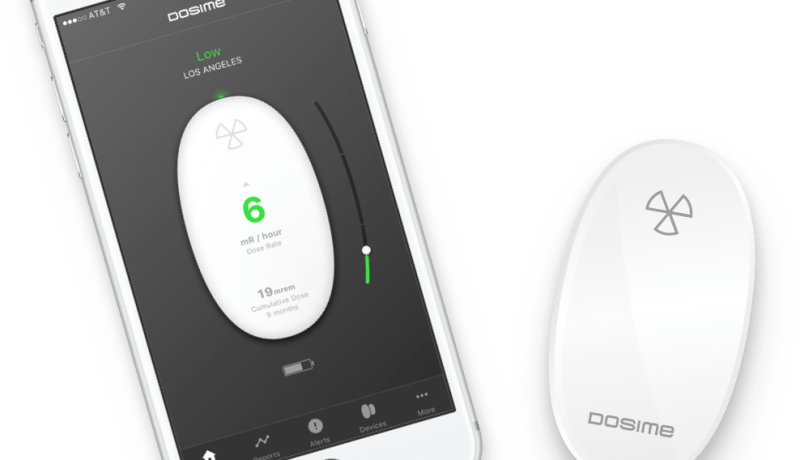A radiation meter for your smartphone
January 24, 2017
on
on

Ionizing radiation is present everywhere on earth, but high doses of radiation are very harmful to living organisms. With the new portable Dosime radiation meter you can measure radiation levels in your surroundings and display them using an app on your smartphone. The device is only a few centimeters in size and weighs just 57 grams (two ounces), making it easy to take it with you everywhere.
The Dosime radiation meter can measure radiation levels up to 100 R/h with a maximum dose of 1000 rem. The device can detect X-rays and gamma radiation, but unfortunately not alpha and beta radiation, which are equally dangerous. It connects with the smartphone over a Bluetooth Low Energy link. The Dosime radiation meter comes with a matching charger and operates for about ten days on a single charge. At home you can dock it in the charger, giving it access to the Wi-Fi network.
The Dosime radiation meter will be available soon at a price of approximately US $250. To us that sounds like you’re paying for peace of mind. On their website the manufacturer says that 82% of the radiation we are exposed to comes from natural sources. The remaining 18% comes from man-made sources, predominately medical equipment such as X-ray machines in hospitals.
The Dosime radiation meter can measure radiation levels up to 100 R/h with a maximum dose of 1000 rem. The device can detect X-rays and gamma radiation, but unfortunately not alpha and beta radiation, which are equally dangerous. It connects with the smartphone over a Bluetooth Low Energy link. The Dosime radiation meter comes with a matching charger and operates for about ten days on a single charge. At home you can dock it in the charger, giving it access to the Wi-Fi network.
The Dosime radiation meter will be available soon at a price of approximately US $250. To us that sounds like you’re paying for peace of mind. On their website the manufacturer says that 82% of the radiation we are exposed to comes from natural sources. The remaining 18% comes from man-made sources, predominately medical equipment such as X-ray machines in hospitals.
Read full article
Hide full article



Discussion (0 comments)